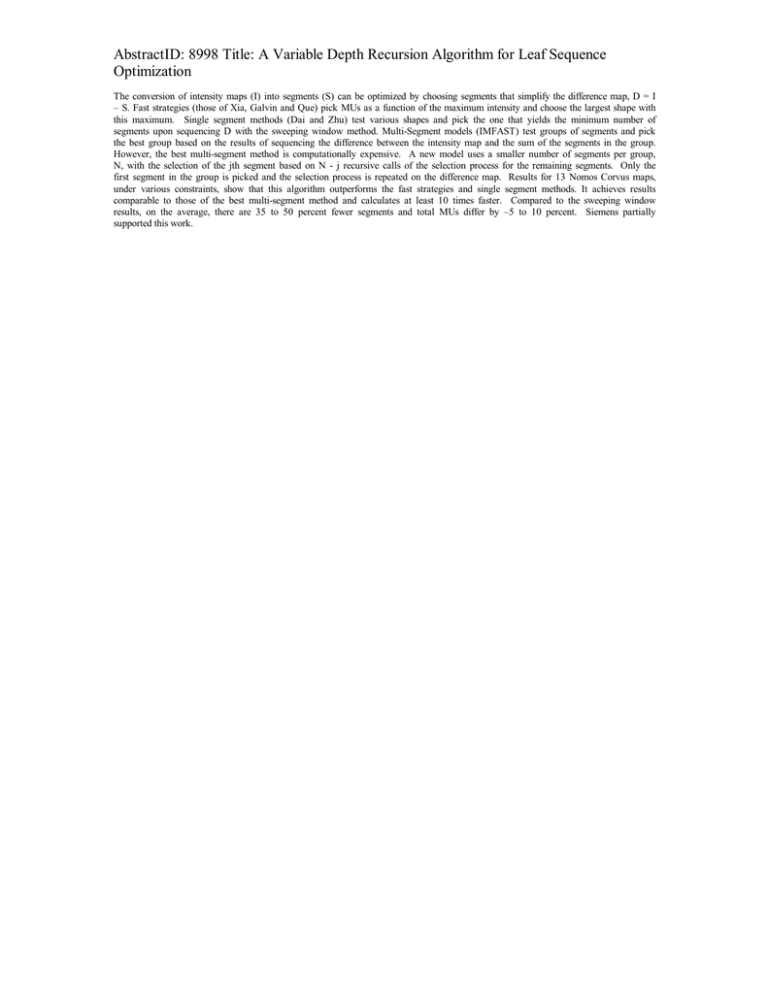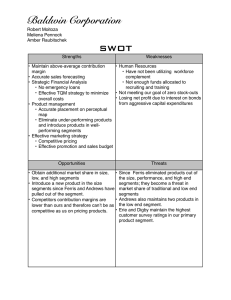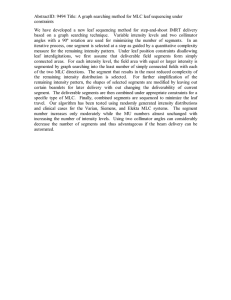AbstractID: 8998 Title: A Variable Depth Recursion Algorithm for Leaf... Optimization
advertisement

AbstractID: 8998 Title: A Variable Depth Recursion Algorithm for Leaf Sequence Optimization The conversion of intensity maps (I) into segments (S) can be optimized by choosing segments that simplify the difference map, D = I – S. Fast strategies (those of Xia, Galvin and Que) pick MUs as a function of the maximum intensity and choose the largest shape with this maximum. Single segment methods (Dai and Zhu) test various shapes and pick the one that yields the minimum number of segments upon sequencing D with the sweeping window method. Multi-Segment models (IMFAST) test groups of segments and pick the best group based on the results of sequencing the difference between the intensity map and the sum of the segments in the group. However, the best multi-segment method is computationally expensive. A new model uses a smaller number of segments per group, N, with the selection of the jth segment based on N - j recursive calls of the selection process for the remaining segments. Only the first segment in the group is picked and the selection process is repeated on the difference map. Results for 13 Nomos Corvus maps, under various constraints, show that this algorithm outperforms the fast strategies and single segment methods. It achieves results comparable to those of the best multi-segment method and calculates at least 10 times faster. Compared to the sweeping window results, on the average, there are 35 to 50 percent fewer segments and total MUs differ by –5 to 10 percent. Siemens partially supported this work.





